We have mentioned before about the predicament with completing ‘kegels’ (or the contraction phase of the kegel alone is what most end up doing). This has an inherent potential impact on labor and delivery, and perineal tearing.
Now there is new research out of the European Journal of Obstetrics & Gynecology and Reproductive Biology about the impact that there can be had when removing what is often referred to as ‘coached pushing’ during labor and delivery in addition to a few other key factors.
At Warman Physio we want to set women up for the best success possible during labor and delivery, and know that knowledge is power!
So let’s run through some of the background here.
The Facts From the Research
An article in Return to Now outlined the results from EJOG in a thought-provoking post. There is an 85% reduction in 3rd and 4th degree tears (the ‘worst’ of the available 1-4 scale) when women are not coached to push during labor. The amount of severe vaginal tearing was reduced from 7% to 1% within the study.
The researchers completed a review to determine what the main contributing factors were for third and fourth degree tears, and implemented a series of measures to try and reduce these risks.
Some of the risks include a larger than average baby, baby being born ‘face-up’, forceps use, previous perineal tear history, as well as maternal age and weight
This program is referred to as STOMP (Stop Traumatic OASIS Morbidity Project) and implemented within the hospital unit by the midwives and OB GYN teams over the following year. This program includes laboring in different positions to deliver the baby such as squatting, kneeling, and standing, as well as breathing through contractions instead of pushing and applying counter pressure to the perineum during delivery of the baby.
A total of 3902 vaginal deliveries occurred during the 1 year following the launch of full STOMP implementation, with the most significant and immediate results occurring in the first 5 months.
What Does This Mean?
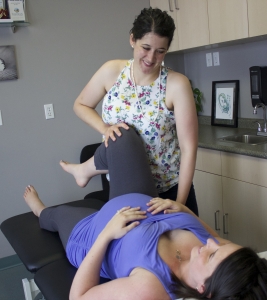
We have seen before in a video demonstration how the uterus does it’s job to push a baby out, coached pushing is shown to lead to closure of the perineum on the descending baby. Allowing women to follow their instincts, without coached pushing, is proven to reduce severe perineal tearing. This will not eliminate all perineal tearing, but gives additional information into how we can best support mothers during labor and delivery.
Physiotherapists are uniquely positioned to assist with mothers during this phase of life, particularly pelvic floor physiotherapists.
Although seeing a pelvic health physiotherapist is not the standard of care here in Canada, there are many women choosing to see one prior to labor and delivery for a variety of reasons such as leaking, pelvic pain, pain with intercourse, and low back pain or sciatica among others. There is also a large trend to see women post-natally as well due to the same reasons in addition to injuries sustained during labor and delivery such as perineal tears.
How can Physiotherapy Help?
Pelvic floor physiotherapists, like those we have at Warman Physio, are able to provide prenatal evaluation of the pelvic floor muscles, coordination, and information on labor and delivery preparation activities. Many women will have been practicing kegels throughout their pregnancy since there still is a significant amount of mis-information regarding what is ‘best’… (remember, a tight pelvic floor isn’t really what we are going for, a functional pelvic floor is what we want!)
In Saskatchewan women are provided an immediate referral to physiotherapy if they have received a third or fourth degree tear (which is GREAT!), however, any woman who has been pregnant into the second trimester may benefit from seeing a pelvic floor therapist after delivering baby.
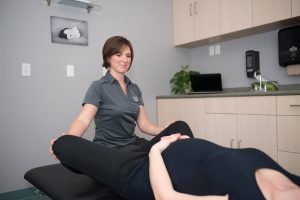
We have seen that in France, the standard of care is that every woman who has a baby is entitled to Pelvic Floor Physiotherapy appointments postpartum.
Reducing injuries during labor and delivery, and having research to support theoretical working knowledge is critical to advancing health and wellness for women of childbearing years.
Wonder if Physiotherapy can help you for labor and delivery? We recommend an appointment 32-34 weeks gestation. (For those with contraindications to a pelvic exam, we would complete various education and external assessment components).
Our Pelvic Health Therapists:
Kendra Usunier – at the Warman Clinic
Haylie Lashta – at both Warman and Evergreen

 We wouldn’t tell someone who has just started running that has developed knee pain that “this is just part of becoming a runner – it will go away when you stop
We wouldn’t tell someone who has just started running that has developed knee pain that “this is just part of becoming a runner – it will go away when you stop
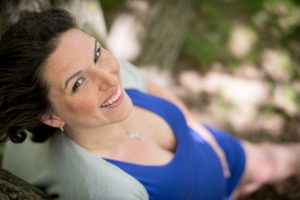
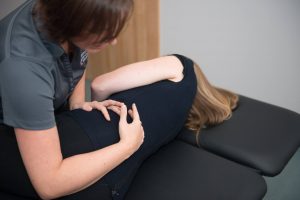 What causes pelvic girdle pain?
What causes pelvic girdle pain? Globally with pain science, one of the most important things to understand are there are no pain signals to the brain. The brain receives information from the body, and depending on what all those signals are saying, will determine if something is painful or not. Have you ever stubbed your toe when you are having a great day? It hurts SO MUCH. But, if you stub your toe while you are in the middle of an argument with someone, it doesn’t hurt the same; that’s pain science!
Globally with pain science, one of the most important things to understand are there are no pain signals to the brain. The brain receives information from the body, and depending on what all those signals are saying, will determine if something is painful or not. Have you ever stubbed your toe when you are having a great day? It hurts SO MUCH. But, if you stub your toe while you are in the middle of an argument with someone, it doesn’t hurt the same; that’s pain science!
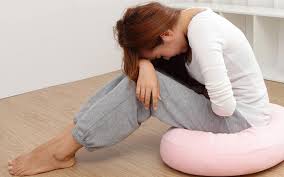 Thankfully, I was put on birth control, which seemed to make my periods manageable. My actual diagnosis of endometriosis was not until Oct of 2017. 6 Months prior to this I started developing excruciating stabbing pains in my right lower abdomen. A walk in doctor triaged me to the emergency room thinking my appendix had ruptured. Blood work showed no signs of infection, IV pain meds were given and an x-ray image did not show anything concerning. I was sent home with pain meds and told that I needed to poop. Exactly one month later (a month between my period) I ended up in excruciating pains where once again I ended up in the emergency room. This ER doctor again thought for sure it was my appendix but this time ordered an ultrasound. The ultrasound showed a 4cm hemorrhagic cyst on my right ovary. I was sent home with pain meds, and another ultrasound requisition. I was told to go see my family doctor in 6 weeks. I was told that a hemorrhagic cyst is nothing to worry about that it can happen with ovulation. My anatomy background and my knowledge of how a body works from also being a vet tech gave me a feeling that
Thankfully, I was put on birth control, which seemed to make my periods manageable. My actual diagnosis of endometriosis was not until Oct of 2017. 6 Months prior to this I started developing excruciating stabbing pains in my right lower abdomen. A walk in doctor triaged me to the emergency room thinking my appendix had ruptured. Blood work showed no signs of infection, IV pain meds were given and an x-ray image did not show anything concerning. I was sent home with pain meds and told that I needed to poop. Exactly one month later (a month between my period) I ended up in excruciating pains where once again I ended up in the emergency room. This ER doctor again thought for sure it was my appendix but this time ordered an ultrasound. The ultrasound showed a 4cm hemorrhagic cyst on my right ovary. I was sent home with pain meds, and another ultrasound requisition. I was told to go see my family doctor in 6 weeks. I was told that a hemorrhagic cyst is nothing to worry about that it can happen with ovulation. My anatomy background and my knowledge of how a body works from also being a vet tech gave me a feeling that  something more was wrong. The pain experienced during this time nearly made me pass out. Breathing hurt so I would hold my breath. I knew something wasn’t right. A 2nd ultrasound 30 hrs later showed that my cyst had grown by a couple of centimeters but that the radiologist wasn’t concerned as it’s just a hemorrhagic cyst and they can happen during ovulation. I wasn’t ovulating, I was at the end of my period. Something wasn’t right.
something more was wrong. The pain experienced during this time nearly made me pass out. Breathing hurt so I would hold my breath. I knew something wasn’t right. A 2nd ultrasound 30 hrs later showed that my cyst had grown by a couple of centimeters but that the radiologist wasn’t concerned as it’s just a hemorrhagic cyst and they can happen during ovulation. I wasn’t ovulating, I was at the end of my period. Something wasn’t right. I had honestly never heard of it before. I went home that night and did what most people do– I took to google. Symptoms of this disease was pelvic pain, which I did have prior to these episodes but chalked it up to the many bladder infections that I’ve suffered from. Extremely painful periods was another symptom, which again I had when I was not on birth control. Surely, this disease couldn’t have started at the age of 16. I kept reading, “many women with endometriosis suffer from infertility.” 2 years prior, I had a beautiful baby girl so I couldn’t much relate to that. Back pain can also be a sign of endometriosis. Sure, my back hurt, but I had also been diagnosed with scoliosis of my spine years earlier so my back pain was from that. “The feeling of your insides being pulled down”. My gynecologist asked me during one of my appointments how I was feeling. I told her “it’s like I’ve eaten Chinese food for all 3 meals a day. Like my guts are just so heavy they are all hanging below my belly button.”
I had honestly never heard of it before. I went home that night and did what most people do– I took to google. Symptoms of this disease was pelvic pain, which I did have prior to these episodes but chalked it up to the many bladder infections that I’ve suffered from. Extremely painful periods was another symptom, which again I had when I was not on birth control. Surely, this disease couldn’t have started at the age of 16. I kept reading, “many women with endometriosis suffer from infertility.” 2 years prior, I had a beautiful baby girl so I couldn’t much relate to that. Back pain can also be a sign of endometriosis. Sure, my back hurt, but I had also been diagnosed with scoliosis of my spine years earlier so my back pain was from that. “The feeling of your insides being pulled down”. My gynecologist asked me during one of my appointments how I was feeling. I told her “it’s like I’ve eaten Chinese food for all 3 meals a day. Like my guts are just so heavy they are all hanging below my belly button.”
